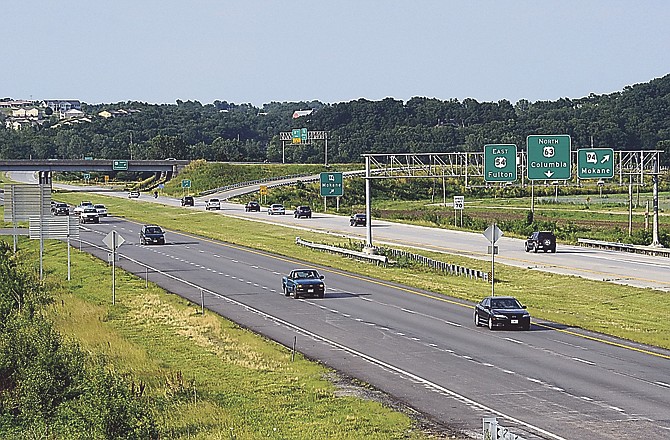Economic development in Jefferson City could benefit from the area being accessible by an interstate spur, according to a report released this week from the Missouri Chamber of Commerce on how to make the state a leading logistics hub.
As business leaders, policymakers and state officials meanwhile met virtually this week for summit on transportation, discussion also showed how the development of a river port in Jefferson City may fit into a broader push to further connect the Missouri and Mississippi rivers to global marketplaces.
The Missouri Chamber of Commerce's "Transportation 2030: Making Missouri a Leading Logistics Hub" report, released this week, includes a recommendation that "Several smaller metros noted inadequate existing (highway) interchanges, the need for new interchanges to encourage economic development, and the benefit of developing a new interstate spur to areas like Jefferson City."
A spur is a three-digit interstate route that branches off a two-digit interstate highway to serve a specific metro area.
The report did not include any details about how much a connection to an interstate spur might benefit Jefferson City but noted such a project "would require significant funding and congressional approval."
As transportation leaders also met this week for a virtual summit, discussion about ports also was included.
The Heartland Port Authority is working to develop a Missouri River port in Jefferson City, on the site of 116 acres of state-owned land just east of the Ike Skelton Training Facility.
Gov. Mike Parson signed a bill in July to transfer the land to the port authority, but the transfer still needs to go through negotiations with the state's Office of Administration.
In the meantime, the Heartland Port Authority is developing its strategic communication plan to attract interest in the project from around the world.
That fits with the vision of regional ports discussed Wednesday during the virtual transportation summit.
Industry leaders in ports and logistics from St. Louis and Kansas City discussed how the region should prepare in order to benefit from increased ocean-going container traffic and the opening of inland waterways as economically-competitive shipping routes.
Mary Lamie, executive vice-president of multi-modal enterprises with St. Louis Regional Freightway, said the barges that already move products up and down the Missouri and Mississippi rivers traditionally move bulk commodities such as coal and agricultural products.
However, new vessels are expected in the near future that could carry shipping containers full of other products between the sea and ports like St. Louis and Jefferson City's proposed port.
Caitlin Murphy, founder and managing director of operations at Global Gateway Logistics in St. Louis, said the widening of the Panama Canal has also made it possible and efficient for large ocean-going container ships to dock on the Gulf Coast - instead of only on the West or East coasts - thereby making it more economically feasible to ship containers to and from the Gulf up and down the Midwest's waterways.
Lamie said coastal ports are getting ready for big ships, big ships mean more containers to be moved, and "we're trying to position ourselves so that we stand ready" to take advantage of the anticipated growth in the industry.
The Missouri Chamber of Commerce's report did not have much to say about Jefferson City's proposed port, other than noting the land transfer authorization and that the local economy could benefit from having a port.

